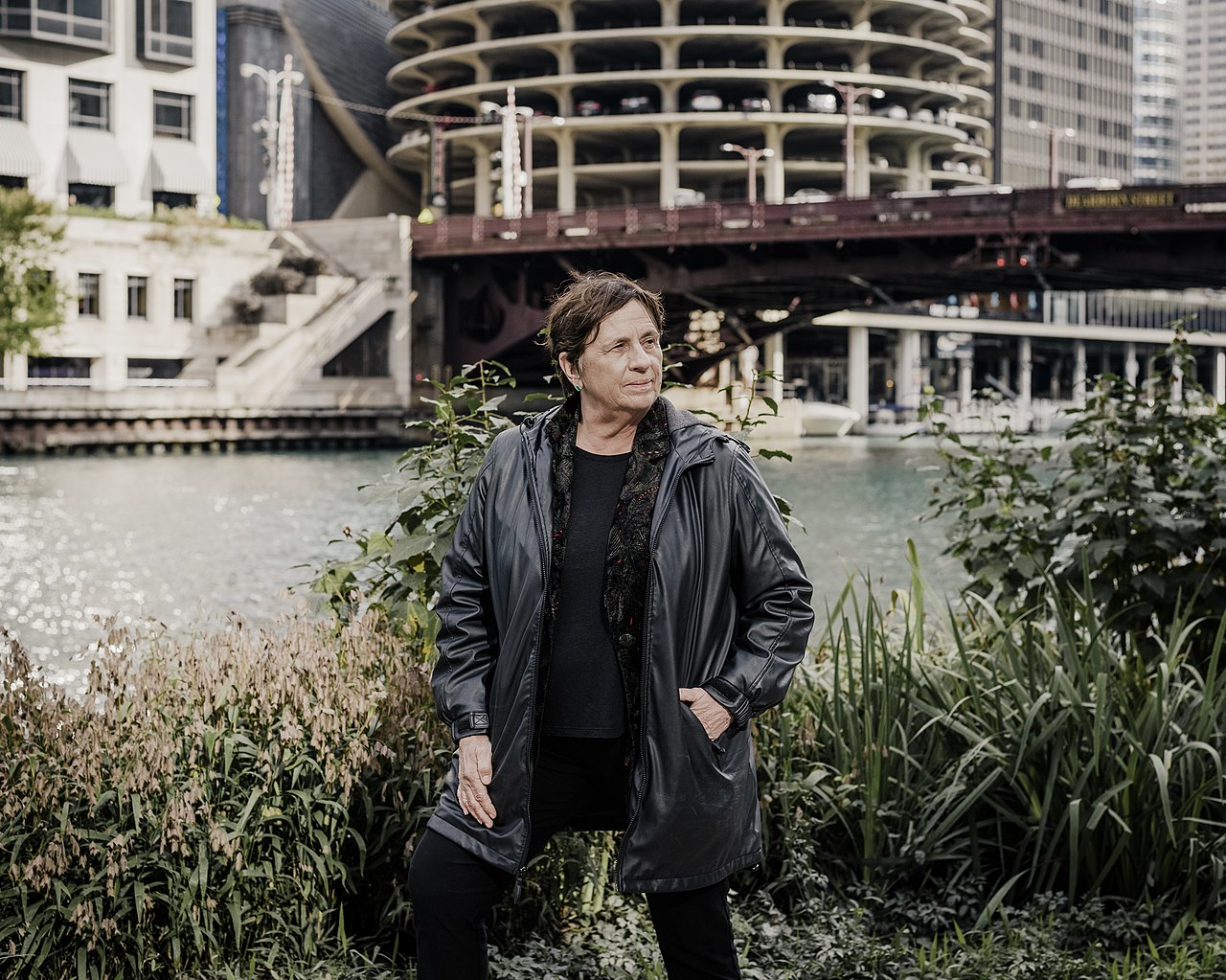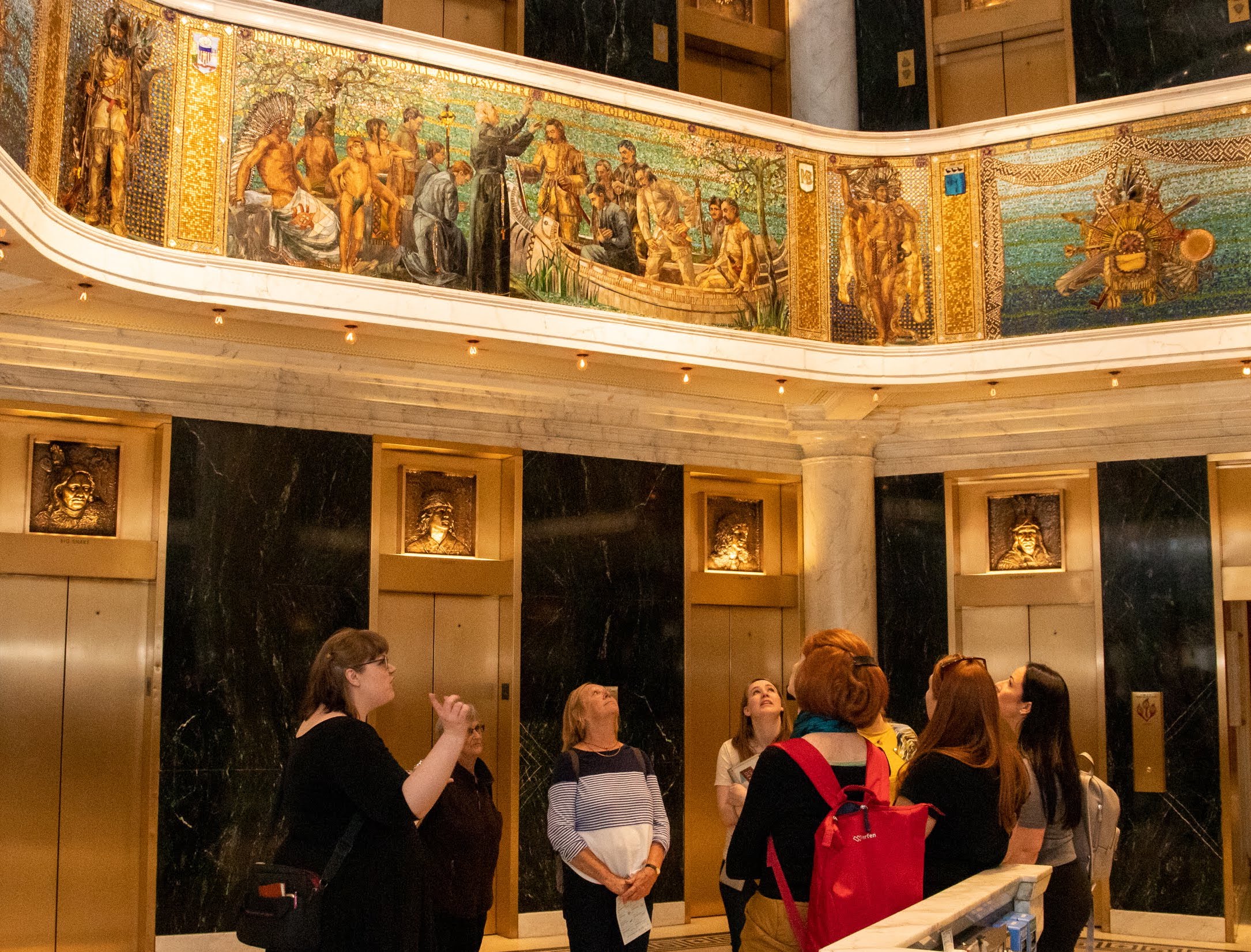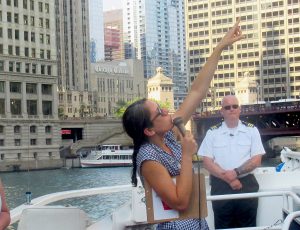The Marquette Building, a landmark Chicago skyscraper from 1895, is a stunner. Right in the heart of the Loop, it’s one of the best extant examples of the Chicago School of architecture. Like many of Chicago’s architectural marvels, it fell into a state of neglect in the 20th century. Today, meticulous work has restored the Marquette Building to its original luster, both inside and out. Its jaw-dropping lobby makes it a perfect spot to visit on a Downtown Bucket List private tour. Having spent years admiring it with tour guests, I felt compelled to share its history with our readers.
We research stories from Chicago history, architecture and culture like this while developing our live virtual tours, in-person private tours, and custom content for corporate events. You can join us to experience Chicago’s stories in-person or online. We can also create custom tours and original content about this Chicago topic and countless others.
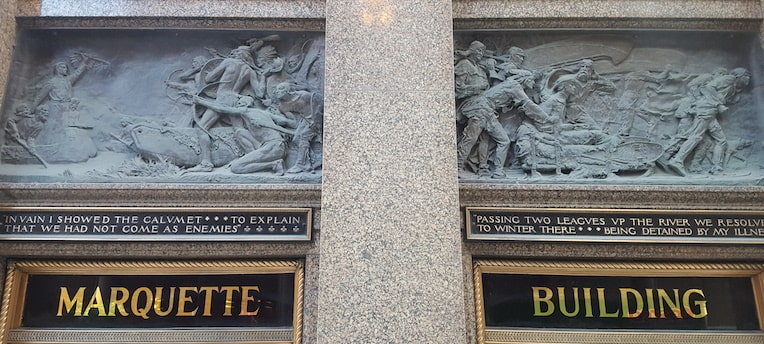
Connecting to Chicago’s Roots
The name itself tells you that the builders of the Marquette Building were dreaming big. Father Jacques Marquette was a French Jesuit missionary and explorer, one of the first trailblazing Europeans to travel through the Great Lakes region. He headed the first European expedition down the mighty Mississippi in 1673. Marquette’s Native guides took him back to the Great Lakes through the Chicago Portage, and he returned the following winter to camp on the South Branch of the Chicago River. Subsequently, some have called him the first European resident of Chicago.

Father Marquette’s story was inspiring to the Marquette’s builders, and they saw their own efforts as a part of his pioneering legacy. They broke ground on the tower in 1893, the same year the Columbian Exposition brought 27 million visitors to Chicago. The World’s Fair created a new image for Chicago, hitherto considered a ghastly boomtown nightmare of a city. Burnham’s grand vision for the White City tied Chicago to the longer thread of “Western civilization” through its architecture and cultural achievements.
The Marquette Building echoed that idea by explicitly connecting the modern skyscraper to the era of European exploration. Bronze relief sculptures above the entrance romantically portray dramatic events in Marquette’s life. Glittering, colorful Tiffany mosaics and more bronze sculptures inside the dazzling lobby continue the mythic story of the French expedition. The effect, even today, is magical and transporting. Entering the Marquette in the late 19th century made it clear that though Chicago may feel like a young cowtown, it was tied to an epic legacy.
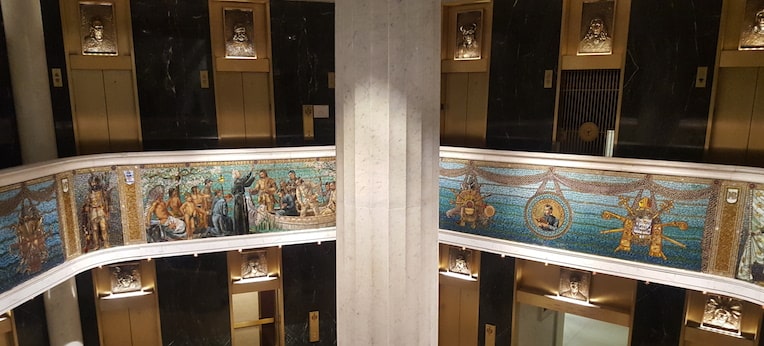
Architecture of the Marquette Building
Beyond its myth-making references to history, the Marquette Building is a masterpiece of Chicago architecture. No surprise, since the names behind its construction are an all-star team of 1890s Chicago buildings. The Marquette Building is among a handful of sterling survivors from the “Chicago School” of skyscraper design. From the 1880s to the 1920s, Chicago architects and engineers threw all their genius into the design and style of a whole new type of building– the world’s first skyscrapers. Towers by the likes of Burnham and Root, Adler and Sullivan, Holabird and Roche, and William Le Baron Jenney soared above the Loop.
Chicago School skyscrapers are typified by a few key architectural elements:
- Steel frame construction, which is “expressed” in the building’s exterior form.
- Exterior “curtain walls” made of brick, terra cotta, and large windows.
- Tripartite design – an ornamented base, simple and expressive middle, and decorative cornice.
- Chicago windows – double-hung on the sides, with large fixed center panes; allowing maximal air and light.
The Marquette Building, designed by Holabird and Roche, ornamented by Louis Comfort Tiffany, and constructed by the Brooks Brothers, includes all of these features. Consequently, it’s one of Chicago’s best ties to its turn-of-the-century architectural glory days.
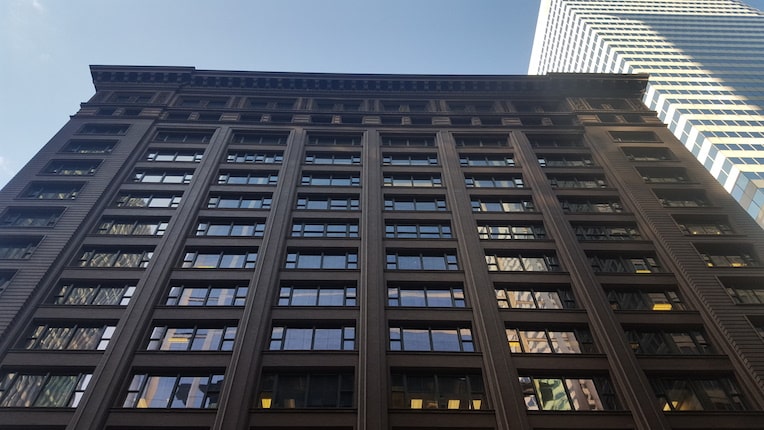
Expressing the Zeitgeist
The Marquette Building’s dynamic engineering and elaborate design fused two very divergent trends. On the one hand, industrialization was driving huge innovations in building materials and engineering techniques. Subsequently, buildings became bigger and taller than ever before, while also being cheaper and faster to build. T’was industrial efficiency which drove our buildings into the skies.
Conversely, the Gilded Age saw a nationwide revival of Neo-classical architecture in the Beaux Arts style. All buildings and monuments that aspired to grandeur had to ape the faux Greco-Roman look of Paris. So despite the cutting-edge technology in its design, the Marquette is clad in terra cotta designs that mimic ancient Rome. The Classical design elements lend the Marquette Building a stately and timeless grace, but there’s still a mismatch between structure and form. The Modernists would ride into town and blow that mismatch apart a few generations later.

Restored to its Original Glory
Due to wear and tear, the Marquette fell into a neglected and mangled state by mid-century. A similar fate befell many other early skyscrapers. Neglect by management often lead to these early marvels untimely destruction. Thankfully, the Marquette survived, albeit in truncated form. The original terra cotta cornice was removed in the 1950s. The building looked cheaply circumcised, for lack of a better word. Happily, the Marquette Building’s current owner, the John D. and Catherine T. MacArthur Foundation, meticulously restored the building in the early 2000s.
The MacArthur Foundation repaired the facade, re-installed the cornice, and cleaned the interior. Today, when I stop into the lobby during a private tour, it’s impossible not to be transported back in time. All that’s missing is my overcoat, top hat, and cravat.
– Alex Bean, Content Manager and Tour Guide
ABOUT CHICAGO DETOURS
Chicago Detours is a boutique tour company passionate about connecting people to places and each other through the power of storytelling. We bring curious people to explore, learn and interact with Chicago’s history, architecture and culture through in-person private group tours, content production, and virtual tours.



